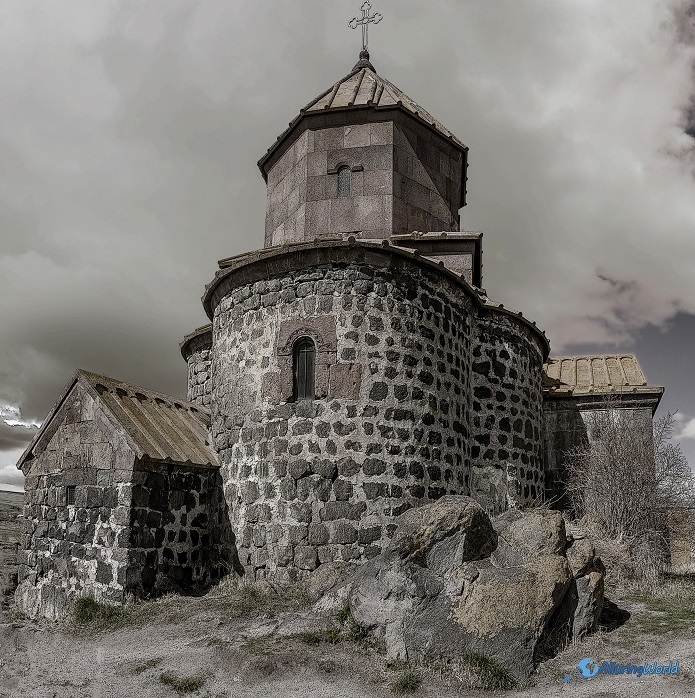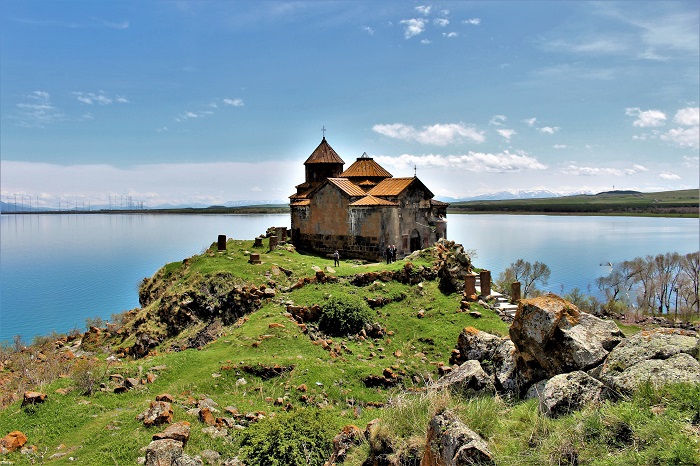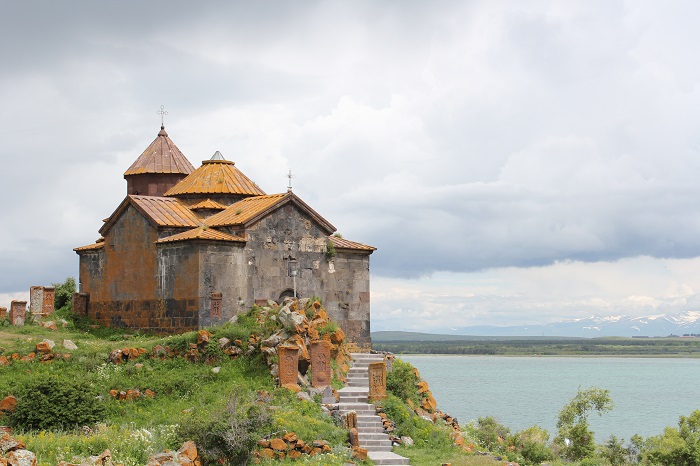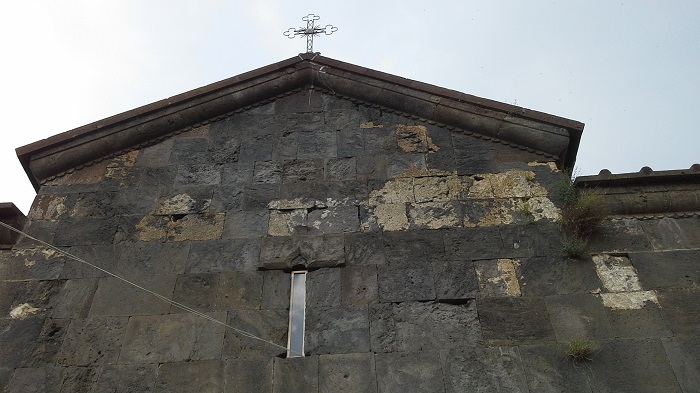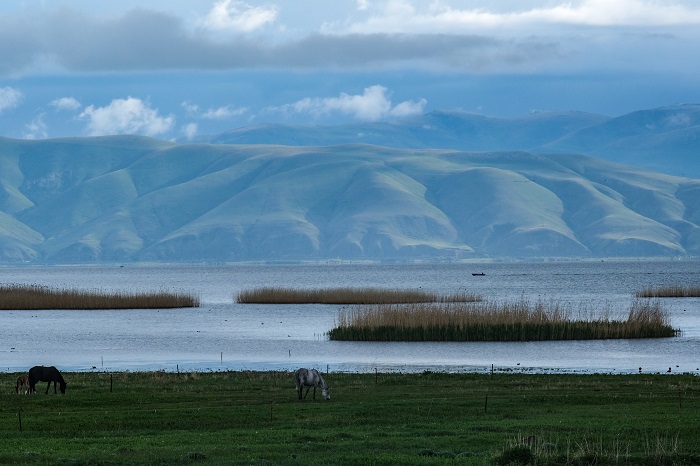Hayravank Monastery is a stunning historic site located northeast of the village of Hayravank, in the central part of the Gegharkunik Province, within the central part of the Republic of Armenia. As the monastery is located more precisely on the western shores of Lake Sevan, approximately 100 km (62 mi) from the capital city, Yerevan, the monastery is perched on a hilltop at an elevation of around 1,900 m (6,200 ft) above sea level, which makes this amazing place with breathtaking views of the lake and surrounding mountains. The serene setting of Hayravank Monastery makes it a popular destination for both pilgrims and tourists seeking to experience Armenia’s rich spiritual heritage and natural beauty.
The exact date of the monastery’s establishment remains uncertain, but it is generally believed to have been founded in the 9th century, during a period of Armenian resurgence in the wake of Arab rule. The monastery is attributed to have been built by a group of monks, with its origins intertwined with the flourishing of Christianity in Armenia, which in fact is the first nation in the world to adopt Christianity as its state religion in 301 AD. Throughout its history, Hayravank Monastery has witnessed numerous transformations, including periods of rebuilding and restoration, but the most significant restoration took place in the early 20th century after the monastery fell into disrepair due to the political upheavals and conflicts in the region.
One of the most notable events in the monastery’s history occurred in the 1950s when it became a significant center for spiritual and cultural revival in Armenia, as during this time, efforts were made to preserve and restore the monastery’s architecture and artworks, ensuring its continued relevance as a symbol of Armenian heritage, but the monastery’s strategic location near Lake Sevan also made it an important pilgrimage site, drawing visitors from various regions who sought solace and inspiration within its walls.
The architectural style of Hayravank Monastery exemplifies traditional Armenian ecclesiastical design, particularly through its use of the cross-dome style, a hallmark of many ancient Armenian churches. This architectural form, characterized by its dome resting on a square base with arms extending in four directions, reflects the fusion of spiritual symbolism and practical construction methods, and as the monastery complex comprises several structures, the most notable of which is the main church, known as Surp Astvatsatsin. This church is constructed from local volcanic tuff, a material prized not only for its remarkable durability but also for its unique aesthetic qualities. The tuff’s reddish-brown hue adds a striking contrast to the surrounding landscape, making the monastery a focal point of beauty and reverence in the region.
ADVERTISEMENT
In addition to its architectural significance, Hayravank Monastery is set against a backdrop that enhances its visual appeal, so the lush greenery of the surrounding hills and the deep blue waters of Lake Sevan create a picturesque setting that has attracted visitors for centuries. This harmonious relationship between the monastery and its natural environment underscores the importance of the site as a place of worship and reflection, so the use of volcanic tuff not only contributes to the structural integrity of the buildings but also ties the monastery to its geographical context, emphasizing the connection between the spiritual and the natural world in Armenian culture. This synergy of architecture and landscape at Hayravank Monastery illustrates the enduring legacy of Armenian ecclesiastical design and its profound cultural significance.
To top it all, the main church of Hayravank is adorned with intricate carvings and inscriptions, showcasing the exceptional craftsmanship of Armenian stonemasons, and the exterior features a beautifully carved entrance adorned with intricate motifs and crosses, typical of Armenian churches, while the interior houses ancient frescoes and religious icons that further emphasize its historical significance. The tranquil atmosphere and the stunning architecture combine to create a spiritual haven that resonates with visitors seeking a deeper connection to Armenia’s religious traditions.
Today, Hayravank Monastery is accessible to visitors, making it a must-see destination for anyone traveling to Armenia. The site has been well-preserved, and efforts have been made to ensure that it remains open for worship and tourism alike, but the monastery is a popular stop for those exploring the scenic Lake Sevan region, which is known for its stunning natural landscapes and rich cultural heritage.
Getting to Hayravank Monastery is relatively straightforward since from the capital Yerevan, visitors can take a marshrutka (minibus) or taxi to Sevan, which takes approximately one and a half to two hours, and upon reaching Sevan, travelers can easily access the monastery via a short drive or a picturesque walk along the lake’s shoreline. Once at the monastery, the serene surroundings and the beautiful views of the lake add to the allure of visiting this historical site, which makes each visit magnificently spectacular.
The best time to visit Hayravank Monastery is during the spring and early autumn months, when the weather is mild and the landscape is adorned with vibrant colors, since this period offers a pleasant climate for exploration and contemplation, allowing visitors to fully immerse themselves in the tranquility of the monastery and its surroundings. Additionally, visiting during the summer months provides opportunities for lakeside activities, including swimming, boating, and picnicking, enhancing the overall experience.
In addition to all this, Hayravank Monastery holds a great importance not only as a religious site but also as a cultural and historical symbol for Armenia since it represents the resilience of the Armenian people and their enduring faith throughout centuries of adversity. As it served throughout the centuries, the monastery still today serves as a reminder of the rich Christian heritage of Armenia and the architectural prowess of its artisans.
In conclusion, Hayravank Monastery stands as a testament to Armenia’s rich spiritual and cultural history, offering visitors a unique opportunity to explore a site that has withstood the test of time. Its breathtaking location, exquisite architecture, and profound historical significance make it a captivating destination for travelers seeking to connect with Armenia’s past, and whether you’re an admirer of architecture, a history enthusiast, or a spiritual seeker, a visit to Hayravank Monastery promises a memorable experience that deepens your appreciation for Armenia’s enduring legacy.
